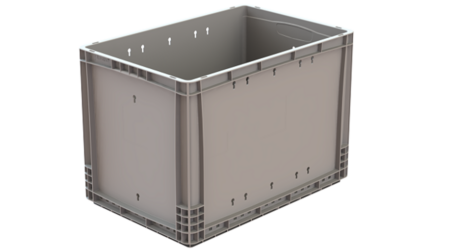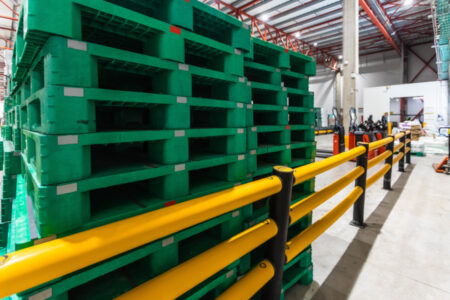
Everything about Plasgad’s plastic crates
Plastic crates are an excellent alternative to cardboard boxes and wooden crates. They offer many advantages, making them a convenient, efficient and safe solution for packaging, shipping and delivery.
We produce a broad range of crates that cater for a variety of industries: agriculture, food, retail, electronics, textile, pharmaceutical companies, and many more. Each use calls for a specific optimal crate.
How to choose the right crate? This section is packed with everything you need to know.
Crate dimensions
The crate’s dimensions are represented by the area of its base and its height.
You may choose from a wide range of sizes and dimensions, according to your packaging needs.
We offer several models of crates with the most common dimensions, which can be conveniently loaded on standard pallets and are designed to make optimal use of their surface.
The most popular dimensions are:
- 400 X 600 mm – can be loaded on pallets of 1200 X 1000 mm and 1200 X 800 mm.
- 550 X 370 mm – can be loaded on pallets of 1100 X 1100 mm.
Crate structure
The crate’s base
The base size refers to the crate’s footprint. In a trapezoidal crate, whose top is wider than its base, the crate dimensions represent the length and width of the top end of the crate, that is, its maximum dimensions.
The crate’s height
A wide range of different heights is available.
The crate’s walls
We offer crates with solid or ventilated walls for optimal fit to varying needs of our customers.
Uses and types of products:
Ventilated walls – excellent ventilation, convenience and cost-efficiency
Crates with ventilated walls provide an ideal solution when shipping and storing agricultural produce and food products. The ventilated walls allow optimal air flow into the crate, which is very useful for storing products in refrigerated rooms and ripening rooms.
Another major advantage of ventilated walls is the crate’s light weight. A lightweight crate is more economical and easier to handle.
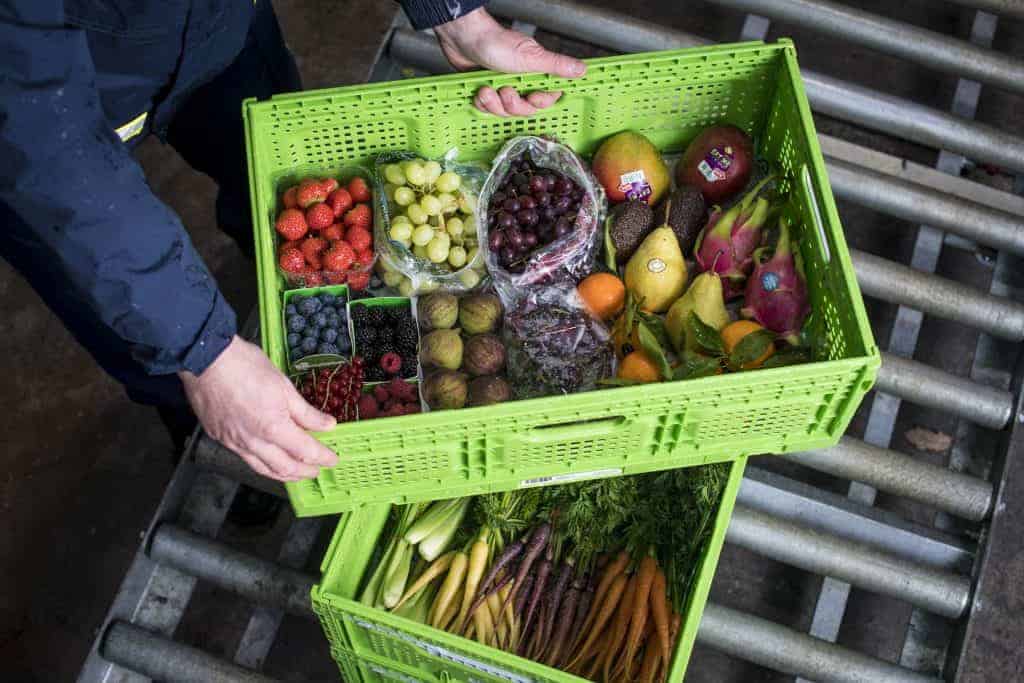
Solid walls – protecting your goods and keeping them clean
Solid walls and a lid ensure that the crate is completely sealed and help protect its contents. Crates with solid walls are particularly suitable for companies and industries that need to ship and store medicines, clothing, fragile electronics, etc.
The crate’s solid walls prevent the penetration of dirt, dust and dampness. Crates with solid walls and floor can be used to store and ship wet products and liquids, used mainly during the production stages of the food industry. The impermeability of the crate prevents leaks and stops dirt from getting in, keeping the contents of the crate clean, hygienic and safe.
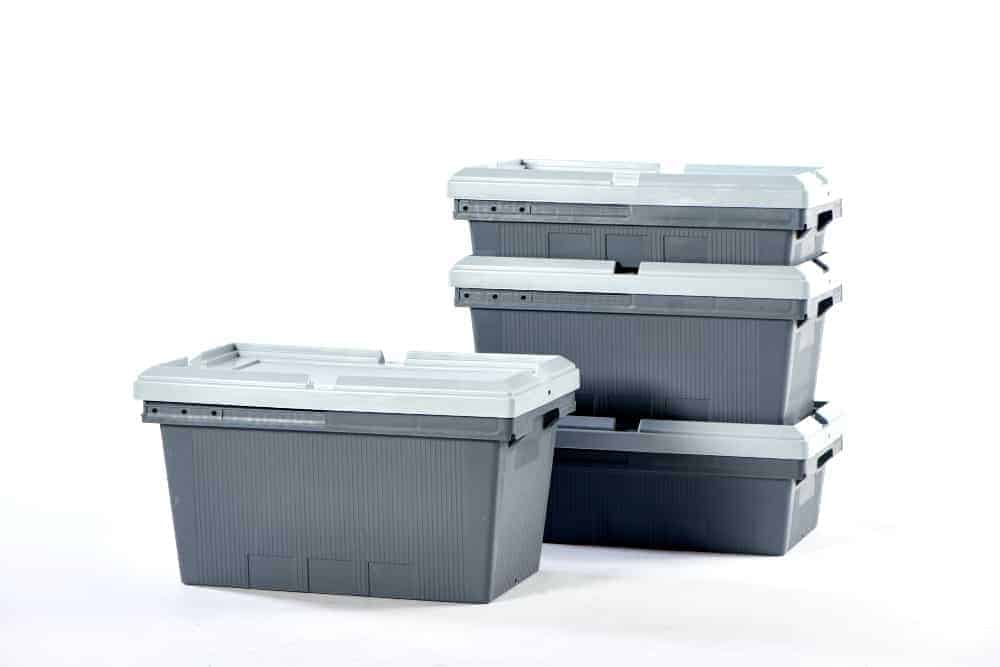
The crate’s floor
The crate’s floor plays an important role. It must be able to carry heavy weight and remain strong and stable both during packaging and throughout the process of shipping and storage. Therefore, the crate’s floor is tailored to the crate’s design and to its purpose.
Stackable crates – with reinforced floor
Stackable crates can be placed on top of each other to form a column. To maintain the stability of the crate and prevent its floor from sinking and damaging the goods stored underneath, these crates are equipped with reinforced floor and are extra durable.
Crates with lids – strong and stable design
When crates with lids are placed on top of each other, the weight of each crate gets distributed across the lid of the crate underneath. The lid provides further reinforcement to the crate’s floor, prevents it from sinking and keeps the crate stable and the goods intact.
Maximum stability
During storage and shipping, crates are placed on top of each other. To ensure that the columns remain stable and to prevent crates from slipping and falling, their edges and floor borders are designed to enable crates to firmly attach to one another, thus maintaining their stability.
Cross stacking
Another technique that can be used to ensure crates’ stability is “cross stacking”.
In this technique, crossed layers of crates are formed on the pallet by placing each crate on top of two other crates. This ensures that each crate has a strong and stable base, which significantly improves the overall stability of the crates on the pallet.
Save space with smart storage
Storing crates in an efficient and smart way can save space and reduce storage costs.
To make such smart storage possible, our crates have a number of unique space-saving features.
Folding crates
Our folding plastic crates are strong and durable and keep their content safe. After use the crate can be folded flat, taking up only 15%-30% of its full height!
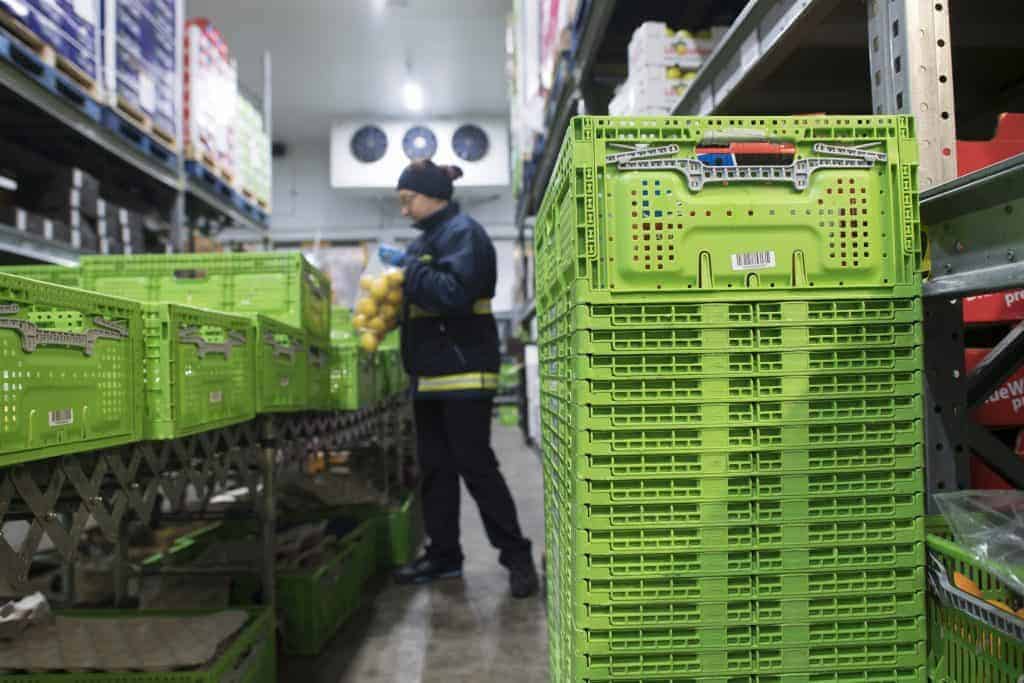
Stack and nest crates
Strong crates with smart ergonomic design. These crates may be nested into each other, when not in use, or stacked on top of each other when full.
These crates are available in different configurations:
Crate with lid – the lid patent
A crate with sloping walls, which easily nests when placed on another crate of the same type. To stack these crates, the top part is covered with an integral or separate lid, so that other crates of the same type can be placed on it.
180° Crate – unique, easy to use design
This crate has sloping walls and a unique asymmetrical shape. Its smart design allows simple transformation from nesting to stacking, by rotating the crate 180 degrees.
Crate with bars – maximum sturdiness and durability
This crate has sloped walls and hard bars that are connected with two hinges to two opposite walls of the crate. The bars can fit into the edge of the crate walls, which enables the crate to nest. By shifting the bars toward the inside of the crate and placing them on the edge of the walls, the crates can be easily stacked on top of each other to form a stable column.
Disposable crates
In some cases, crates cannot be reused. This is most common when shipping goods overseas. For this purpose, we offer plastic crates that are suitable for a limited number of uses.
These crates have many advantages, which make them a safe and affordable alternative to cardboard boxes:
- They are made of durable and sturdy plastic
- They retain their shape in different climates – unlike cardboard boxes, which lose shape in conditions of high humidity, our plastic crates retain their shape even under extreme weather conditions. This is particularly important for agricultural produce that undergoes cooling and ripening processes, which require crates highly resistant to low temperature and high humidity.
- They are lightweight, which saves on shipping costs
- They are fully recyclable
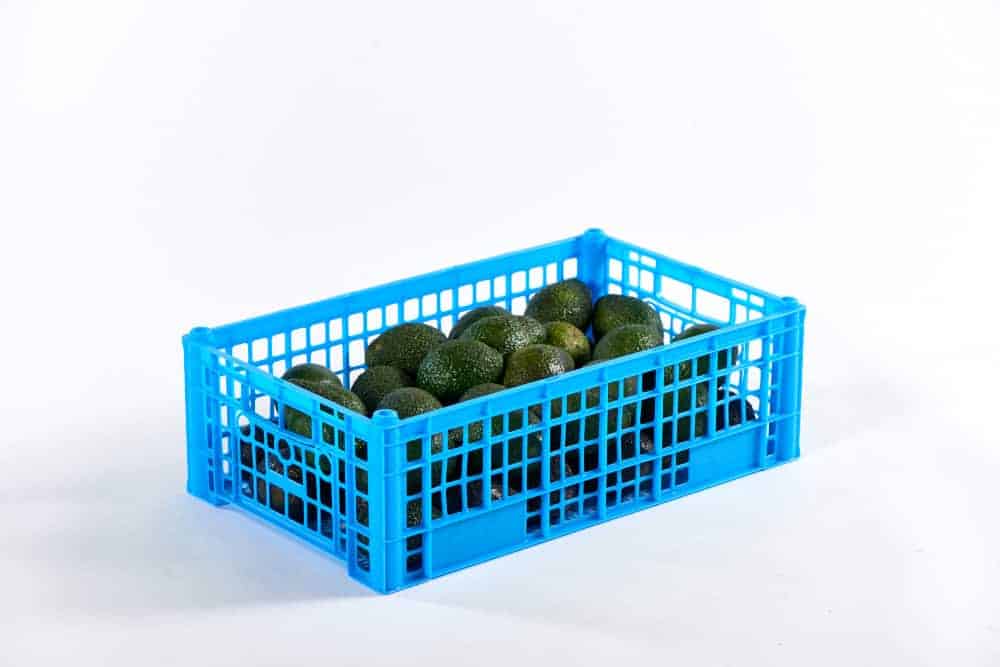
Recycling and sustainability
All our plastic crates are made from high-quality materials, using advanced technology and strict manufacturing procedures. Even when exposed to extreme temperatures and weather conditions, our plastic crates do not release hazardous materials and do not pollute the environment.
Our plastic crates are subject to stringent quality control procedures. They are exceptionally sturdy and durable and are designed for long-term reuse. The crates can be easily cleaned with water to prepare them for reuse.
When the crates can no longer be used, our customers can send them back to us (for payment). We then recycle them through an advanced, environmentally-friendly recycling process.
Our customers benefit, and so does the environment.


